- Clone
- 129C1 (See other available formats)
- Regulatory Status
- RUO
- Other Names
- BST2, tetherin, HM1.2 antigen, bone marrow stromal antigen 2, PDCA-1
- Isotype
- Rat IgG2b, κ
- Ave. Rating
- Submit a Review
- Product Citations
- publications
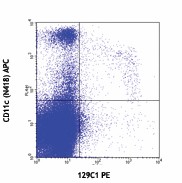
-

SJL mouse splenocytes double stained with 129C1 PE and CD11c (N418) APC -

SJL mouse splenocytes double stained with rat IgG2b isotype control PE and CD11c (N418) APC
| Cat # | Size | Price | Quantity Check Availability | Save | ||
|---|---|---|---|---|---|---|
| 127103 | 25 µg | 79€ | ||||
| 127104 | 100 µg | 268€ | ||||
CD317, known as BST2, tetherin, HM1.2 antigen, bone marrow stromal antigen 2, or PDCA-1, is type II transmembrane glycoprotein with a molecular mass of 29-33 kD. It is predominantly expressed on Type I IFN-producing cells (IPCs) in naïve mice, but is up-regulated on most cell types following stimulation with type I IFNs and IFN-gamma. It is highly expressed on terminally differentiated normal plasmacytoid dendritic cells and some tumor cells, such as multiple myeloma, renal cell carcinoma, and melanoma cells. BST2 is a recently identified as IFN-induced cellular response factor that blocks release of HIV-1 and other retroviruses from infected cells. BST2 has been found to be the natural ligand of ILT7 in human model.
Product DetailsProduct Details
- Verified Reactivity
- Mouse
- Antibody Type
- Monoclonal
- Host Species
- Rat
- Immunogen
- Mouse plasmacytoid dendritic cells (DCs)
- Formulation
- Phosphate-buffered solution, pH 7.2, containing 0.09% sodium azide.
- Preparation
- The antibody was purified by affinity chromatography, and conjugated with PE under optimal conditions.
- Concentration
- 0.2 mg/ml
- Storage & Handling
- The antibody solution should be stored undiluted between 2°C and 8°C, and protected from prolonged exposure to light. Do not freeze.
- Application
-
FC - Quality tested
- Recommended Usage
-
Each lot of this antibody is quality control tested by immunofluorescent staining with flow cytometric analysis. For flow cytometric staining, the suggested use of this reagent is ≤0.25 µg per million cells in 100 µl volume. It is recommended that the reagent be titrated for optimal performance for each application.
- Excitation Laser
-
Blue Laser (488 nm)
Green Laser (532 nm)/Yellow-Green Laser (561 nm)
-
Application References
(PubMed link indicates BioLegend citation) -
- Blasius AL, et al. 2006. J. Immunol. 177:3260
- Kojima K, et al. 2011. Am J Respair Crit Care Med. 184:328. PubMed.
- Product Citations
-
- RRID
-
AB_1953283 (BioLegend Cat. No. 127103)
AB_1953283 (BioLegend Cat. No. 127104)
Antigen Details
- Structure
- Type II transmembrane glycoprotein with a molecular mass of 29-33 kD.
- Distribution
-
Expressed on type I IFN-producing cells, plasmacytoid dendritic cells, and neoplastic B cells, such as multiple myeloma.
- Function
- Recently identified as antiviral protein that blocks the release of nascent retrovirus or other particles from infected cells.
- Cell Type
- Dendritic cells, B cells
- Biology Area
- Immunology, Innate Immunity, Costimulatory Molecules
- Molecular Family
- CD Molecules
- Antigen References
-
1. Douglas JL, et al. 2009. J Virol. 83(16):7931
2. Cao W, et al. 2009. J. Exp. Med. 206(7):1603
3. Neil SJ, et al. 2008. Nature 451:425 - Gene ID
- 69550 View all products for this Gene ID
- UniProt
- View information about CD317 on UniProt.org
Related FAQs
- What type of PE do you use in your conjugates?
- We use R-PE in our conjugates.
Other Formats
View All CD317 Reagents Request Custom Conjugation| Description | Clone | Applications |
|---|---|---|
| Purified anti-mouse CD317 (BST2, PDCA-1) | 129C1 | FC,IP |
| PE anti-mouse CD317 (BST2, PDCA-1) | 129C1 | FC |
| Pacific Blue™ anti-mouse CD317 (BST2, PDCA-1) | 129C1 | FC |
| Alexa Fluor® 647 anti-mouse CD317 (BST2, PDCA-1) | 129C1 | FC |
Customers Also Purchased
Compare Data Across All Formats
This data display is provided for general comparisons between formats.
Your actual data may vary due to variations in samples, target cells, instruments and their settings, staining conditions, and other factors.
If you need assistance with selecting the best format contact our expert technical support team.
-
Purified anti-mouse CD317 (BST2, PDCA-1)
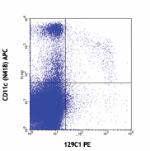
SJL mouse splenocytes double stained with 129C1 PE and CD11c... 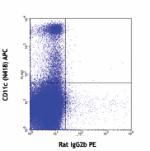
SJL mouse splenocytes double stained with rat IgG2b isotype ... -
PE anti-mouse CD317 (BST2, PDCA-1)

SJL mouse splenocytes double stained with 129C1 PE and CD11c... 
SJL mouse splenocytes double stained with rat IgG2b isotype ... -
Pacific Blue™ anti-mouse CD317 (BST2, PDCA-1)
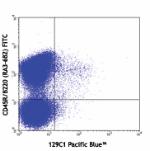
C57BL/6 splenocytes stained with 129C1 Pacific Blue™ a... 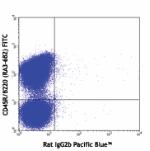
C57BL/6 splenocytes stained with rat IgG2b Pacific Blue&trad... -
Alexa Fluor® 647 anti-mouse CD317 (BST2, PDCA-1)

C57BL/6 mouse splenocytes stained with 129C1 Alexa Fluor&re... 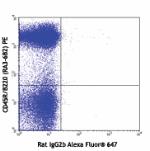
C57BL/6 mouse splenocytes stained with rat IgG2b Alexa Fluo...
 Login / Register
Login / Register 











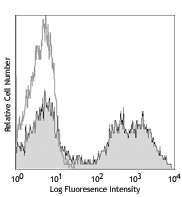

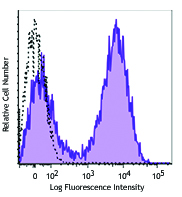



Follow Us